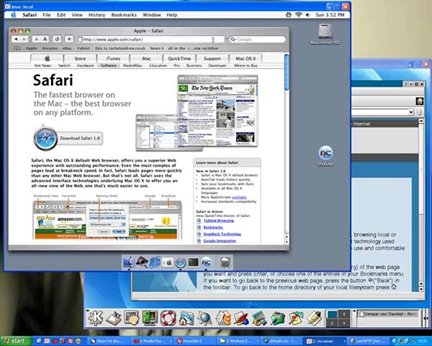

- #VNC VIEWER FOR MAC OS 10.4 HOW TO#
- #VNC VIEWER FOR MAC OS 10.4 MAC OS X#
- #VNC VIEWER FOR MAC OS 10.4 SOFTWARE#
- #VNC VIEWER FOR MAC OS 10.4 PASSWORD#
Make sure that “Apple Remote Desktop” and “Remote Login – SSH” are checked. From the Sharing panel click on Firewall. Next we’ll configure the firewall so your users can connect remotely. If you are going to want your users to connect using SSH (great for security) you’ll want to enable the Remote Login service in the Sharing panel as well.
#VNC VIEWER FOR MAC OS 10.4 SOFTWARE#
The permissions at the top of this screen are for Apple Remote Desktop software connections only.
#VNC VIEWER FOR MAC OS 10.4 PASSWORD#
The service will start and you’ll need to assign a password in the section “VNC viewers may control screen with password.” You do not have to configure each user account with permissions. To enable it stay in System Preferences.Ĭlick on Show All at the top to return to the main panel. Instead, we will use the system VNC server. Vine Server does have a system server but I do not recommend using it because it interferes with the functionality that we are trying to achieve. System VNC Server, Accept SSH connections and Firewall Configuration The very last option is a definite necessity, check the box beside “Enable fast user switching.” The “View as” option is your own personal preference but I personally like the icon since it doesn’t take up so much of the title bar. Under “Display login window as” I would recommend selecting “Name and password.” This way if someone happens to connect to your system through the network they will not see a list of your user accounts, which will give them half of the information they need to gain access to your system. Once there you’ll want to make sure that “Automatically log in as:” is unchecked. If you cannot click on the button you’ll need to un-lock the system for changes by clicking on the lock at the bottom of the panel. Look for a button labeled “Login Options” and click on it.

Once the preferences panel has opened go to Accounts. Either click on the System Preferences icon in the dock or from the desktop click on the Apple icon and then System Preferences. Once you have multiple users set up you need to enable fast user switching. It also gives you an account that you can use to login to the machine you are setting this up on without disturbing a session of another user or your own. This is an optional step but I find that it lessens the confusion of system administration. This is simply an account named “Administrator” with administrator privileges. The first user that I would recommend setting up is an Administrator account. I am using a fresh installation of Tiger but you may not be. The first task that we’ll take care of is setting up users. User account creation and fast user switching But hopefully, this tutorial will get you up and running without going through the moans and groans that I did! Let’s get started. If you are one of those people, I have great news for you! You can do it right now, for free! All it will take is a Mac with OS 9 or later (I am running OS 10.4.11), Vine Server, a little time and maybe a few groans here and there. I’m sure there are others out there wanting to implement terminal server functionality but can’t afford to pay for a proprietary product either. While I think it’s a great application for an organization that can afford to implement it, I cannot. Sudo defaults write /Library/Preferences/ the previous blog entry I wrote about Aqua Connect Terminal Server for Mac OS X. You can also configure screen sharing by running the following command on the MAC computer: Please add a password, as explained above. If during the remote control, the message “Server did not offer supported security type!” appears. Remember to add this password in the Mac VNC configuration of our software. The way to do that is to click on “ Computer Settings” then enable “ VNC viewers may control screen with password”. On the screen sharing page, you can change the access authorizations and add a password for the remote control. You just activate the VNC server, allowing you to connect to this computer with our software. Enable “ Screen Sharing” within the services panel. In the Options, Click the check box next to “ Share files and folders using SMB (Windows)”. Enable “ File Sharing” within the services panel. Samba allows your computer to be visible on your domain. If you use your domain controller as a DNS server, add your server in the DNS tab. Change the workgroup with the domain where this Mac is going to appear. Select your default connection, click on “ Advanced”. Go in the “ System Preferences”, section “ Network”.
#VNC VIEWER FOR MAC OS 10.4 MAC OS X#
I want to install the VNC server module across the whole of my Mac OS X client machines.

#VNC VIEWER FOR MAC OS 10.4 HOW TO#
How to configure the TightVNC remote control tool (screen sharing)? How do I install VNC server on Mac OS X client computers?


 0 kommentar(er)
0 kommentar(er)
